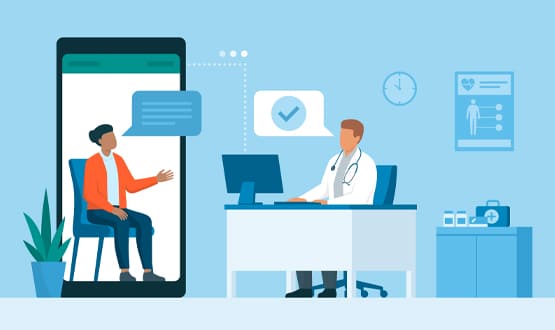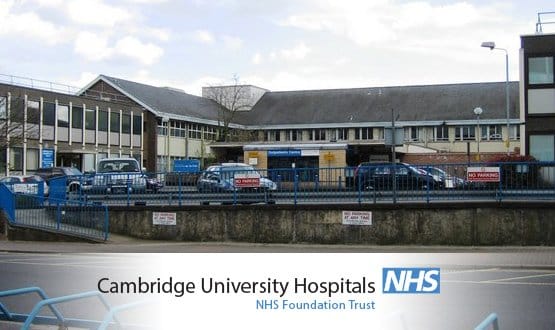EHI Awards 2011: the SCI-DC’s the limit
- 7 June 2012

If there are two themes that run through the Scottish Care Information – Diabetes Collaboration it is these: standards and datasets.
They are not new themes, but they do underpin a clinically useful system that is making a real difference to clinicians’ ability to care for their patients and to their patients’ lives.
SCI-DC supports inter-disciplinary team working by enabling clinicians to view all the details relevant to the care of their patients with diabetes.
They can access educational modules as well as automated risk stratification measures for their patients.
Patients can also access their own information to support self-care. It provides reports for healthcare planners and audit for research and Quality and Outcome Framework payments to GPs.
A very big database
At the heart of SCI-DC is a database of all 237,468 people diagnosed with diabetes in Scotland. It is updated daily by a dynamic web-based clinical information system that spans primary, secondary and tertiary care.
It pulls data from all 1,050 GP practices in the country (running EMIS, Vision and GPASS systems) as well as 40 hospital-based diabetes clinics (SCI-DC Clinical), from laboratory systems (SCI Store, ATOS Origin), the national diabetic retinopathy screening system (Soarian, Siemens) and the master patient index (CHI, ATOS Origin).
With strong clinical leadership and an equally strong technical team, it is now live in all 14 Scottish health boards, has over 5,000 clinical users, and links with four university research departments.
“This is an example of an electronic clinical record focused on diabetes,” says Dr Alistair Emslie-Smith, chair of the SCI-DC steering group and a GP.
“It’s making a big impact by improving communication between professionals. It gives us a big opportunity to integrate care.”
For example, GPs can access information about their patients’ care that has taken place in hospital. Hospital doctors can access information about what drugs patients have been prescribed in primary care. Everyone can see the latest lab test results.
SCI-DC also provides risk stratification, for example identifying patients with foot ulcers who are at risk of losing a foot – and enabling clinicians to instigate treatment to prevent this.
With a long history
Clearly, such an extensive network has taken years to develop as Scott Cunningham, SCI-DC’s technical consultant, explains.
“It began as a research project in the mid 1990s,” he says. “We wanted to get a handle on the many patients in Tayside with diabetes and we developed an Access database. We had trained nurses going from practice to practice pulling all the patient notes and entering details manually.”
By 1999, the project had defined datasets and was able to develop a web-based system based on Microsoft SQL Server, and at that point it moved from being a research tool to a clinical system useful for primary and secondary care.
In 2003, NHS Scotland wanted to develop a national system and NHS Tayside was chosen to take this forward, bringing in elements of its existing work and work by NHS Lanarkshire.
Then along came the Scottish Enhanced Functionality Programme, which, among other things, set standards for interfaces between primary care systems and Scottish Care Information.
“We put in a requirement for a generic interface for primary care sending information to us,” says Cunningham. By 2006, SCI-DC was Scotland wide. It now has funding through to 2014.
Driving improvements in care
Through annual reports, SCI-DC has been able to track not only the rise of diabetes in Scotland (in common with the rest of the western world, rates have doubled in the last decade) but also improvements in care.
By 2009, Scotland was recording key data such as blood pressure, blood sugar and cholesterol in 90% of patients. Between 2003 and 2009, SCI-DC reported a 40% reduction in amputation rates and a 40% reduction in sight-threatening retinopathy.
The clinical and technical team is not standing still and there are now plans to update and modernise SCI-DC.
“It’s all changing in that there is now more emphasis on electronic discharge documents and a lot of long term conditions systems are being subsumed into clinical portals,” says Graeme Morris, head of the Clinical Technology Centre at NHS Tayside.
“We are now developing a new product called SCI-Diabetes which will be a single clinical system for clinicians.”
The idea is that instead of reaching SCI-DC via their own systems, clinicians will be able to link directly to the new SCI-Diabetes regardless of their location.
It will also have additional functionality for diabetes nurse specialists, podiatrists, paediatricians and dieticians.
It has already gone live in the Western Isles and a road test is due to start soon in Tayside with a view to rolling out Scotland wide during 2012.
Dr Emslie-Smith adds: “We want to start to look at pre-diabetes care and whether we can use the system to help health professionals intervene earlier.”
Given the recent UN Declaration on Non-Communicable Diseases, which highlighted the rise in life-style diseases such as diabetes globally and pointed out that some 40% of them could be prevented, this is a timely idea.
Opening up access to patients
Work is also underway to develop patient access. Currently, about 500 patients use a functionality called ‘My Diabetes, My Way’ to access their own records.
“It’s really at a demonstration stage to prove we could do it,” says Cunningham. “We are now developing more streamlined processes to make sure we can roll it out more widely.”
One big question is whether SCI-Diabetes will continue to get central support. “This is very much an invest to save programme,” says Morris.
The economic modelling shows that 10% of NHS expenditure is on diabetes and that the condition accounts for 15% of in patient costs so preventing diabetes and some of its complications is potentially highly cost effective. SCI-DC currently costs £4 a patient a year to run; he intends to bring that down to £2 a patient a year by 2014.
Winning the award at the EHI Awards 2011 in association with BT was great recognition for the technical team, says Morris.
“But at the end of the day this is not about the team but about helping clinicians to help patients. It’s great to see awards going to projects that help patients.”

To enter an award category, reserve a table, or for more information on the EHI Awards 2012 in association with BT please visit the Awards section of the website.




